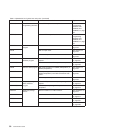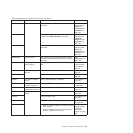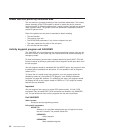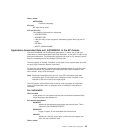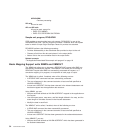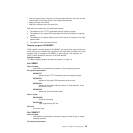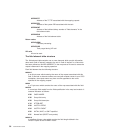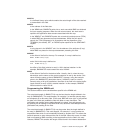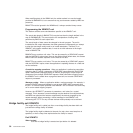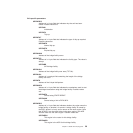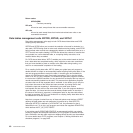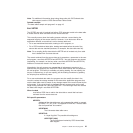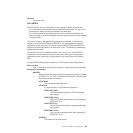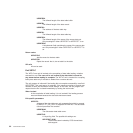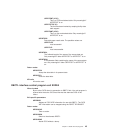When modifying data in the XBMIN exit, the safest method is to use the length
provided in BMXMAPLN, but to ensure that any pad characters added by BMS are
preserved.
BMXATTR must be ignored in the XBMIN exit; it always contains binary zeroes.
Programming the XBMOUT exit
This section contains some considerations specific to the XBMOUT exit.
The actual data length (in BMXACTLN) may be less than the length defined in the
map (in BMXMAPLN). This occurs due to the compression of trailing nulls
performed by BMS for each output field.
The actual length of data cannot be changed in the exit program. The exit is
invoked after the output datastream has been generated; consequently, an attempt
to alter the data length could result in an invalid datastream. Therefore, if an
XBMOUT exit program modifies data, it must do so with reference to the length
value in BMXACTLN.
BMXDATA may contain a null value. This can be caused by a SEND MAP request
with the MAPONLY option when the map has fields without default data; this causes
BMS to send an attribute sequence for the field but no data.
BMXATTR may contain a null value. This can be caused by a SEND MAP request
with the DATAONLY option, when the application is updating the data in a field and
not the attributes.
Cumulative mapping operations: When an application is performing cumulative
mapping—that is, issuing a sequence of SEND MAP commands with the ACCUM
option—BMS builds composite display in which a single page of output might be
constructed from multiple SEND MAP requests. When cumulative mapping occurs,
the XBMOUT exit is called when a page has been built, not as each SEND MAP
request is processed.
Message routing: When an application builds a routing message—for example, it
issues a ROUTE command followed by one or more SEND MAP commands with
the SET or PAGING option specified—the XBMOUT exit is invoked in the same way
as for a non-routed mapping request.
However, the UEPBMTCT parameter is passed as a null value for a routed
message. This is because a routed message may be destined for multiple devices,
and BMS has optimized the features supported by the devices targeted by the
routed message. When processing a routed message in the XBMOUT exit,
referencing the TCTTE for any of these devices would probably not be relevant.
Bridge facility exit XFAINTU
The bridge facility exit is called just after a new bridge facility has been built and
just before the bridge facility is deleted.
The bridge facility might be deleted at the end of a task, when zero keep time is
specified, or when a keep time expires before the facility is reused.
Exit XFAINTU
When invoked
Just after a bridge facility is created and just before it is deleted.
38 Customization Guide



